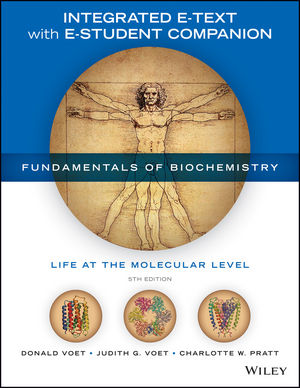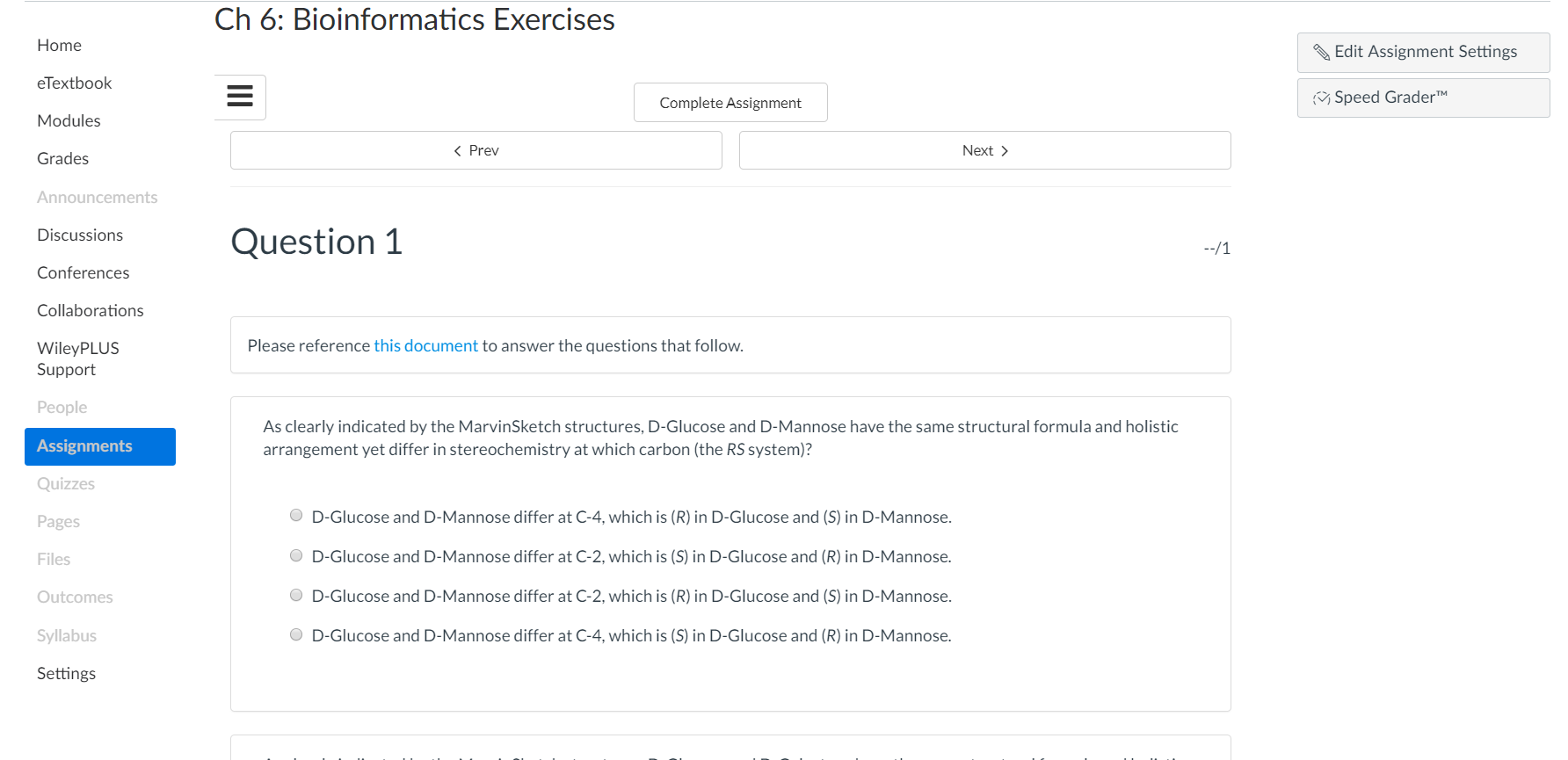Voet, Fundamentals of Biochemistry: Life at the Molecular Level, 5th Edition

Voet, Fundamentals of Biochemistry: Life at the Molecular Level, 5th Edition
By Donald Voet, Judith Voet, Charlotte Pratt
SINGLE-TERM
$69 USD | $89 CAN
MULTI-TERM
$119 USD | $139 CAN
Fundamentals of Biochemistry addresses the enormous advances in biochemistry, particularly in the areas of structural biology and bioinformatics, by providing a solid biochemical foundation that is rooted in chemistry to prepare students for the scientific challenges of the future. While continuing in its tradition of presenting complete and balanced coverage that is clearly presented and relevant to human health and disease, this version of Fundamentals of Biochemistry includes new pedagogy and enhanced visuals that provide a pathway for student learning.
WileyPLUS for Fundamentals of Biochemistry allows instructors to customize and tailor the course to meet their individual needs and provides a rich pathway for student understanding of the enormous advances in biochemistry. With bioinformatics exercises, animated process diagrams, and calculation videos to provide a solid biochemical foundation that is rooted in chemistry to prepare students for the scientific challenges of the future.
Schedule a Demo Request Instructor Account
- What's Inside
- About the Authors
- Table of Contents
Guided Tours
The Guided Tours, created by Charlotte Pratt, are multi-part animations that present big picture concepts conveyed through animations, tutorials, and practice.

Brief Bioinformatics Exercises
Short, assessable, and content-specific bioinformatics exercises serve as virtual hands-on assignments that illuminate the connections between theory and applied biochemistry, thereby stimulating student interest and proficiency in the subject.
Sample Calculation Videos
Students come to the course with different levels of math skills. These embedded videos provide sample calculations and step-by-step walkthroughs for key equations.
- Animated Process Diagrams: The many process diagrams in the course have each been broken down into discrete steps that students can navigate at their desired pace. These resources are intended to enrich the learning process for students, especially those who rely heavily on visual information. Whereas some resources, particularly the Animated Figures and Animated Process Diagrams, are brief and could easily be incorporated into an instructor's classroom lecture, all the resources are ideal for student self-study, allowing students to proceed at their own pace or back up and review as needed. All the media resources are keyed to specific figures or sections, so students can explore molecular structures and processes as they work through a chapter.
- Extended Bioinformatics Projects: A set of 12 newly updated exercises by Paul Craig, Rochester Institute of Technology, covering the contents and uses of databases related to nucleic acids, protein sequences, protein structures, enzyme inhibition, and other topics. The exercises use real data sets, pose specific questions, and prompt students to obtain information from online databases and to access the software tools for analyzing such data.
- Focus on Evolution: An evolutionary tree icon marks content that illuminate examples of evolution at the biochemical level.
- Reorganized and Expanded Problem Sets: End-of-chapter problems are now divided into two categories so that students and instructors can better assess lower- and higher-order engagement.
Features Include:
- Introduction to the Chemistry of Life
- Water
- Nucleotides, Nucleic Acids, and Genetic Information
- Amino Acids
- Proteins: Primary Structure
- Proteins: Three-Dimensional Structure
- Protein Function: Myoglobin and Hemoglobin, Muscle Contraction, and Antibodies
- Carbohydrates
- Lipids and Biological Membranes
- Membrane Transport
- Enzymatic Catalysis
- Enzyme Kinetics, Inhibition, and Control
- Biochemical Signaling
- Introduction to Metabolism
- Glucose Catabolism
- Glycogen Metabolism and Gluconeogenesis
- Citric Acid Cycle
- Electron Transport and Oxidative Phosphorylation
- Photosynthesis (available online)
- Lipid Metabolism
- Amino Acid Metabolism
- Mammalian Fuel Metabolism: Integration and Regulation
- Nucleotide Metabolism
- Nucleic Acid Structure
- DNA Replication, Repair, and Recombination
- Transcription and RNA Processing
- Protein Synthesis
- Regulation of Gene Expression
Source: https://www.wileyplus.com/chemistry/voet-fundamentals-of-chemistry-5e-eprof18108/
Posted by: merylmeryloverholsere0272935.blogspot.com
Post a Comment